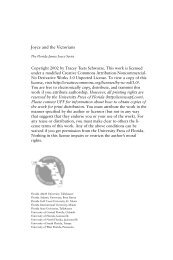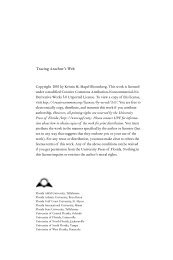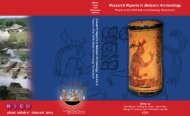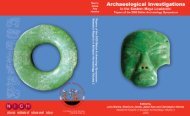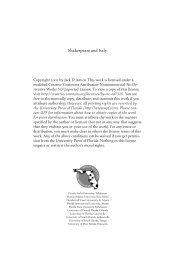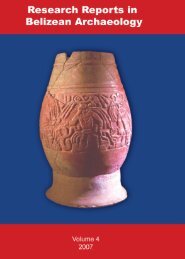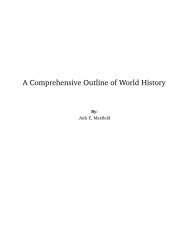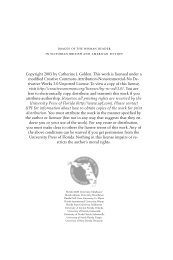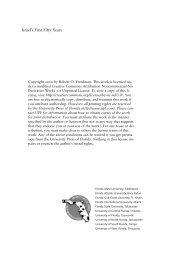Bernard Shaw's Remarkable Religion: A Faith That Fits the Facts
Bernard Shaw's Remarkable Religion: A Faith That Fits the Facts
Bernard Shaw's Remarkable Religion: A Faith That Fits the Facts
Create successful ePaper yourself
Turn your PDF publications into a flip-book with our unique Google optimized e-Paper software.
The Marriage of Science and <strong>Religion</strong> 215<br />
cal system, as a physical system, could have direct contact with ano<strong>the</strong>r<br />
physical system outside itself. The brain, <strong>the</strong>y insist, is nothing but a<br />
chemical-electrical machine, yet magically it directly apprehends <strong>the</strong><br />
world outside itself. Such absurdities are unnecessary. The abandonment<br />
of naive realism, as Bertrand Russell showed, does not entail <strong>the</strong> abandonment<br />
of science. Russell, who was wholeheartedly committed to science<br />
and <strong>the</strong> scientific way of thinking, provided <strong>the</strong> basis for an alternative to<br />
<strong>the</strong> conventional materialism of Ryle. The stupendous success of modern<br />
science conceals a startling paradox. As Russell put it:<br />
Physics assures us that <strong>the</strong> occurrences which we call “perceiving<br />
objects” are at <strong>the</strong> end of a long causal chain which starts from <strong>the</strong><br />
objects, and are not likely to resemble <strong>the</strong> objects except, at best, in<br />
certain very abstract ways. We all start from “naive realism,” i.e., <strong>the</strong><br />
doctrine that things are what <strong>the</strong>y seem. But physics assures us that<br />
<strong>the</strong> greenness of grass, <strong>the</strong> hardness of stones, and <strong>the</strong> coldness of<br />
snow, are not <strong>the</strong> greenness, hardness, and coldness that we know in<br />
our own experience, but something very different. . . . Naive realism<br />
leads to physics, and physics, if true, shows that naive realism is false.<br />
Therefore naive realism, if true, is false; <strong>the</strong>refore it is false. (Inquiry<br />
15)<br />
Physics has achieved its triumphant conquest of <strong>the</strong> material world by<br />
denying <strong>the</strong> truth of our awareness of that world. As Russell said: “Modern<br />
physics . . . reduces matter to a set of events which proceed outward<br />
from a centre. If <strong>the</strong>re is something fur<strong>the</strong>r in <strong>the</strong> centre itself, we cannot<br />
know about it, and it is irrelevant to physics” (Outline 163). The hardness,<br />
temperature, color, and taste which we imagined to be attributes of material<br />
objects are only <strong>the</strong> effects those objects have on our consciousness.<br />
The immediate objects of our perception are not physical objects in <strong>the</strong><br />
usual sense but what Russell calls “percepts,” and <strong>the</strong>y exist in our heads,<br />
not <strong>the</strong> world outside:<br />
We do not know much about <strong>the</strong> contents of any part of <strong>the</strong> world<br />
except our own heads; our knowledge of o<strong>the</strong>r regions . . . is wholly<br />
abstract. But we know our percepts, thoughts and feelings in a more<br />
intimate fashion. Whoever accepts <strong>the</strong> causal <strong>the</strong>ory of perception is<br />
compelled to conclude that percepts are in our heads, for <strong>the</strong>y come at<br />
<strong>the</strong> end of a causal chain of physical events leading, spatially, from <strong>the</strong><br />
object to <strong>the</strong> brain of <strong>the</strong> percipient. We cannot suppose that, at <strong>the</strong><br />
end of this process, <strong>the</strong> last effect suddenly jumps back to <strong>the</strong> starting



